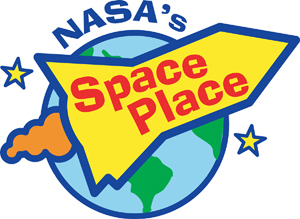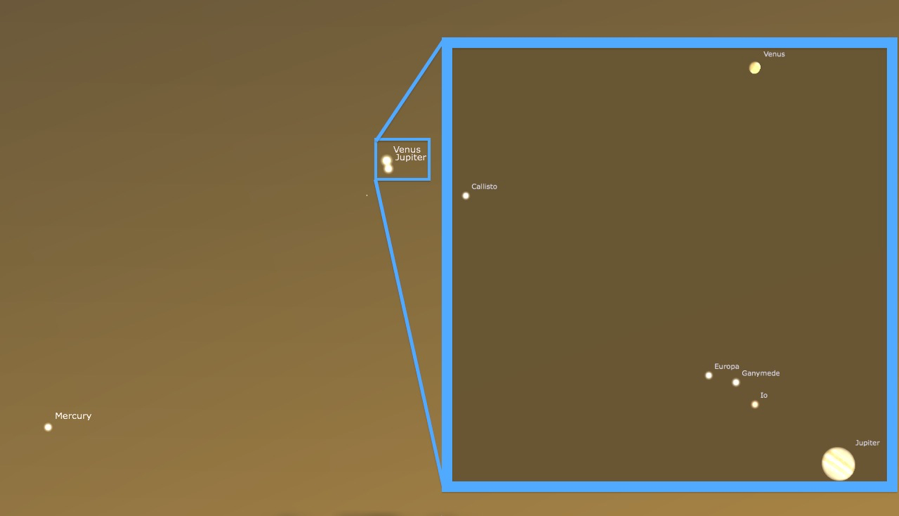As Earth speeds along in its annual journey around the Sun, it consistently overtakes the slower-orbiting outer planets, while the inner worlds catch up to and pass Earth periodically. Sometime after an outer world—particularly a slow-moving gas giant—gets passed by Earth, it appears to migrate closer and closer to the Sun, eventually appearing to slip behind it from our perspective. If you’ve been watching Jupiter this year, it’s been doing exactly that, moving consistently from east to west and closer to the Sun ever since May 9th.
On the other hand, the inner worlds pass by Earth. They speed away from us, then slip behind the Sun from west to east, re-emerging in Earth’s evening skies to the east of the Sun. Of all the planets visible from Earth, the two brightest are Venus and Jupiter, which experience a conjunction from our perspective only about once per year. Normally, Venus and Jupiter will appear separated by approximately 0.5º to 3º at closest approach. This is due to the fact that the Solar System’s planets don’t all orbit in the same perfect, two-dimensional plane.
But this summer, as Venus emerges from behind the Sun and begins catching up to Earth, Jupiter falls back toward the Sun, from Earth’s perspective, at the same time. On August 27th, all three planets—Earth, Venus and Jupiter—will make nearly a perfectly straight line.
As a result, Venus and Jupiter, at 9:48 PM Universal time, will appear separated by only 4 arc-minutes, the closest conjunction of naked eye planets since the Venus/Saturn conjunction in 2006. Seen right next to one another, it’s startling how much brighter Venus appears than Jupiter; at magnitude -3.80, Venus appears some eight times brighter than Jupiter, which is at magnitude -1.53.
Look to the western skies immediately after sunset on August 27th, and the two brightest planets of all—brighter than all the stars—will make a dazzling duo in the twilight sky. As soon as the sun is below the horizon, the pair will be about two fists (at arm’s length) to the left of the sun’s disappearance and about one fist above a flat horizon. You may need binoculars to find them initially and to separate them. Through a telescope, a large, gibbous Venus will appear no more distant from Jupiter than Callisto, its farthest Galilean satellite.
As a bonus, Mercury is nearby as well. At just 5º below and left of the Venus/Jupiter pair, Mercury achieved a distant conjunction with Venus less than 24 hours prior. In 2065, Venus will actually occult Jupiter, passing in front of the planet’s disk. Until then, the only comparably close conjunctions between these two worlds occur in 2039 and 2056, meaning this one is worth some special effort—including traveling to get clear skies and a good horizon—to see!
Image credit: E. Siegel, created with Stellarium, of a small section of the western skies as they will appear this August 27th just after sunset from the United States, with Venus and Jupiter separated by less than 6 arc-minutes as shown. Inset shows Venus and Jupiter as they’ll appear through a very good amateur telescope, in the same field of view.
To teach kids more about Venus and Jupiter, visit the NASA Space Place webpages titled “All About Venus” [http://spaceplace.nasa.gov/all-about-venus/en/] and “All About Jupiter” [http://spaceplace.nasa.gov/all-about-jupiter/en/].
This article is provided by NASA Space Place. With articles, activities, crafts, games, and lesson plans, NASA Space Place encourages everyone to get excited about science and technology. Visit spaceplace.nasa.gov to explore space and Earth science!


